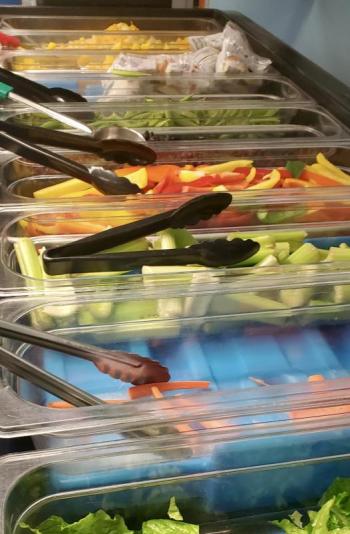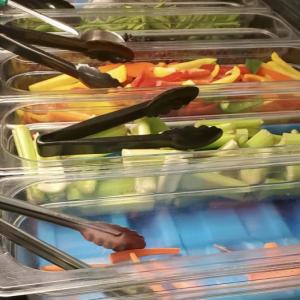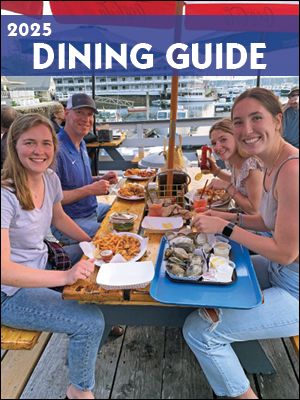It's not your grandma’s school lunch program
Lunch. We all (should) eat it. The federal government requires that a day in a public school can’t pass without it since the passage of the National School Lunch Program (NSLP) in 1946. Buthow kids get their food and where they go to eat have changed at Boothbay Region Elementary School (BRES) and Boothbay Region High School (BRHS).
One of the main aspects of the NSLP is the availability of free/reduced meals for students whose families are at or below 130% of the federal poverty level (free) or between 130% and 185% (reduced). Children are automatically eligible if they are on the Supplemental Nutrition Assistance Program (SNAP), Temporary Assistance for Needy Families (TANF), Food Distribution Program on Indian Reservations (FDPIR), or if they are Head Start participants, foster children, homeless, migrant and/or runaway. Recently, the USDA expanded this to include those on Medicaid benefits.
In Maine, all students have received free lunch regardless of family income since the 2022-2023 school year. However, the Boothbay school system still maintains eligibility records, according to CSD Food Service Director Heidi Stevens.
Under Provision 2, the schools only have to collect applications every four years. During the three intervening years, the school doesn't have to make new eligibility determinations and only counts the total number of reimbursable meals served each day.
Stevens said full-price meals total about $4.52 for lunch and $2.37 for breakfast. The federal government completely reimburses free meals, and reimburses 40 cents for reduced and about 10 cents for full price. Everything else is covered by the state. The school budget supplements when meals go beyond their allotted price due to rising food and labor costs.
“We try to keep it in that range as much as possible,” she said.
Stevens is considering switching from Provision 2 to the Community Eligibility Provision (CEP), which would eliminate income applications. The threshold of low-income households in a district necessary to participate in CEP was recently lowered from 40% to 25%. According to Stevens, the adoption of Medicaid as an eligibility has meant that more of the population qualifies for free/reduced lunch, a jump from single digits to about 183 across both schools.
So, lunch is paid for. What are we eating?
Stevens said the USDA requires the presence of the five food groups: grain, meat/meat alternative, fruit, vegetable and dairy. Students must choose one item from at least three of those categories, with fruit or veggie being a requirement.
Now, where to sit ...
At BRES, the daily conversion of the gym into a cafeteria is a thing of the past. Five years ago, the second-floor music room was transformed into a permanent lunchroom. BRES Principal Shawna Kurr explained, the change was made to free up the area so two gym classes could run concurrently, as the previous system kept half the area occupied for over two hours.
There were also safety concerns as children had to pass through the kitchen near heavy equipment and hot steam. In the current set-up, the food is brought from preparation areas and served. Kurr also found that taking kids out of the gym environment improved behavior as the volume doesn’t have to rise to compete with the gym class, and kids leave their seats less.
“It’s on the smaller side for a cafeteria for the amount of kids that we put in there at any given time, but we're making do.”
BRES’s renovation plans include a larger cafeteria space and safer lunch line access to the kitchens.
Seating arrangements have also changed at BRHS. In 2021, the school used a divider wall to turn a third of the lunchroom into a STEAM-oriented learning space. Students now all eat during one block, spread between the lunchroom, library and BRHS Community Room (which used to be the computer lab).
“Now that all students have one-to-one devices and tabletop computers are a thing of the past, a computer lab is no longer needed,” wrote BRHS Principal Tricia Campbell in an email to the Register.
She said there haven’t been any space issues, especially as many seniors leave campus during the period. “This is a time for everyone to disconnect and exhale; spreading out and having choice allows for increased relaxation.”





























